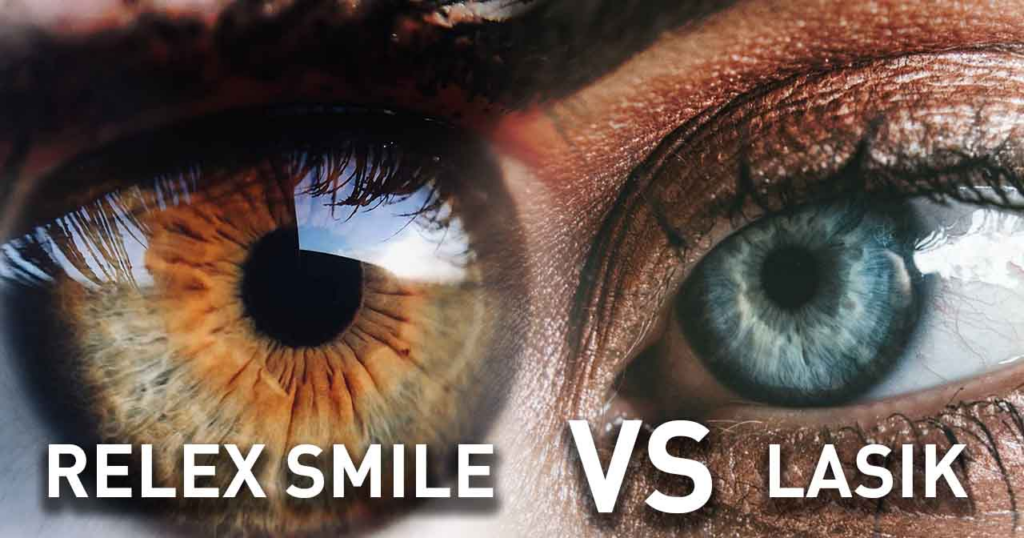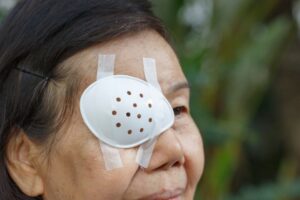LASIK seems to be the most prominent eye surgery procedure in the present medical world. Over the years, people with different eye problems, especially severe ones, have been enjoying restored sharp vision after undergoing LASIK eye surgery.
As you might have also discovered, LASIK has been the major laser eye correction procedure that has helped many eye patients to have a perfect without using glasses or contact lenses. Indeed, most Ophthalmologists like to recommend LASIK, having known and trusted its healing capabilities. Click here to read more about LASIK eye surgery.

But recently, eye specialists have made a remarkable, mind-blowing discovery in the quest to research to provide a safer and better eye correction procedure. Say hello to the newest laser sight correction technology – SMILE.
Both SMILE and LASIK are effective eye surgery procedures that guarantee perfect sight in the shortest time possible. With the advent of these vision correction options, patients wouldn’t have to depend on eyeglasses and contact lenses for improved vision. Though LASIK is still pretty much an excellent vision correction option, it seems SMILE is taking over in terms of experts’ recommendations and patients’ preferences.
What is the reason behind the sudden shift?
It is natural for humans to try something new to test its potential and effect compared to the former option. That, and some other reasons, can be why people now go for SMILE more than LASIK.
After the long reign of LASIK, SMILE is the newest ground-breaking innovation in laser vision correction. Hence, even ophthalmologists took an interest in creating awareness and encouraging patients to consider it a reliable option.
Meanwhile, there is a bone of contention when deciding which one serves best between LASIK and SMILE. While some believe SMILE is the better, others still believe LASIK is the most efficient option. To make an informed decision, you must understand how LASIK and SMILE work. That way, you will know which vision correction procedure is correct for you. Click here to read about SMILE and LASIK: Three Major Differences ODs Must Know.
How does LASIK work?
LASIK came into operation in the early 90s. And, since, then it is has been the most used form of laser eye surgery today. LASIK is an acronym for laser-assisted in situ keratomileuses, the best-known laser refractive surgery that corrects vision problems.
The surgeon uses a laser to make a tiny flap across the patient’s cornea during the LASIK procedure. The surgeon then folds the flap and uses a second laser to reshape the cornea. This process automatically corrects the patient’s vision allowing the eyes to focus more clearly.

You might have also noticed that it doesn’t take more time to perform the entire LASIK procedure. Depending on the surgeon’s experience, everything should last for more than 30 minutes.
During LASIK, patients don’t feel any pain. The surgeon would have relaxed the patient’s nerves before the procedure started. Since the surgery is 100% blade-free, it goes easy.
After LASIK, the flap does not heal on the spot. It takes a little time before your eyes get restored to a perfectly healthy state. As often recommended, patients should not engage in eye-straining activities such as driving, running, and watching mobile phone screens or television immediately after the surgery. However, you can continue to do all that after your eyes have been perfectly healed. The first phase of LASIK healing takes only 24 hours. But, you will have to wait for seven days before you can resume your daily hobbies and activities.
Meanwhile, LASIK may come with some side effects. Some of the most common issues patients experience after LASIK include dry eye symptoms and mild eye infection.
LASIK is a reliable correction procedure for major eye problems such as near-sightedness, farsightedness, and astigmatism.
How does SMILE works?
SMILE is the latest innovation after LASIK. This procedure tends to be minimally noiseless, odorless, and less invasive. Like LASIK, SMILE also provides a long-lasting solution to different levels of eye problems, whether mild or severe. It doesn’t take much time for surgeons to perform the whole procedure.
During a SMILE eye surgery, the surgeon will remove a thin layer that looks very similar to a contact lens from the eye’s surface via a small opening. This layer sits beneath the eye. After removing the layer, the surgeon then reshapes the cornea to correct the refractive error. At the end of this process, the patient gets a better vision.
SMILE is a gentle and straightforward procedure that doesn’t last longer than 10 -15 minutes in total. The laser only lasts for 30 seconds. So, patients won’t have to feel any pain in the entire process.
Meanwhile, there can be a slight disturbance while performing a SMILE procedure as the small laser opening size can make things uncomfortable for the eyes. If you choose the SMILE vision correction option, you may experience cases of severed nerves, dry eye, and eye infection. If all that happens, it would be at a very minimal level.
After the SMILE vision correction procedure, you can be sure of a perfect vision that can last for a lifetime. You can resume your daily hobbies such as driving, watching movies, running, showering, and even applying makeovers within a few days after an expert a=gas conducted SMILE surgery for you. You can read about Differences Between LASIK Procedure and Visian ICL by visiting http://danieltwogood.com/differences-between-lasik-procedure-and-visian-icl/

Overall, the SMILE procedure tends to be a convenient and comfortable experience for patients. People testify that they enjoyed SMILE the more in terms of the short and straightforward process and the effective, lasting results that follow in a few days.
Final Thoughts
Both LASIK and SMILE are good vision correction options with long-lasting results. They are similar in procedure, preparation, methods, and results. Meanwhile, you might be more qualified for one more than the other.
This guide has given you an objective report about how the two options works. You can choose whichever one you prefer based on the prescription of your surgeon.


